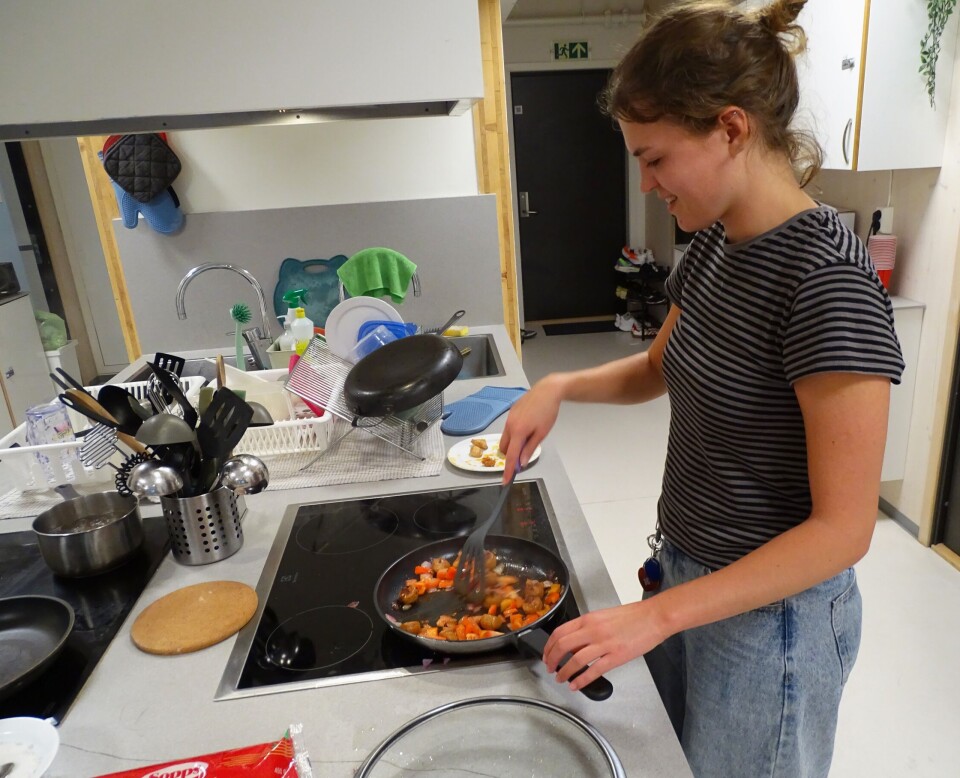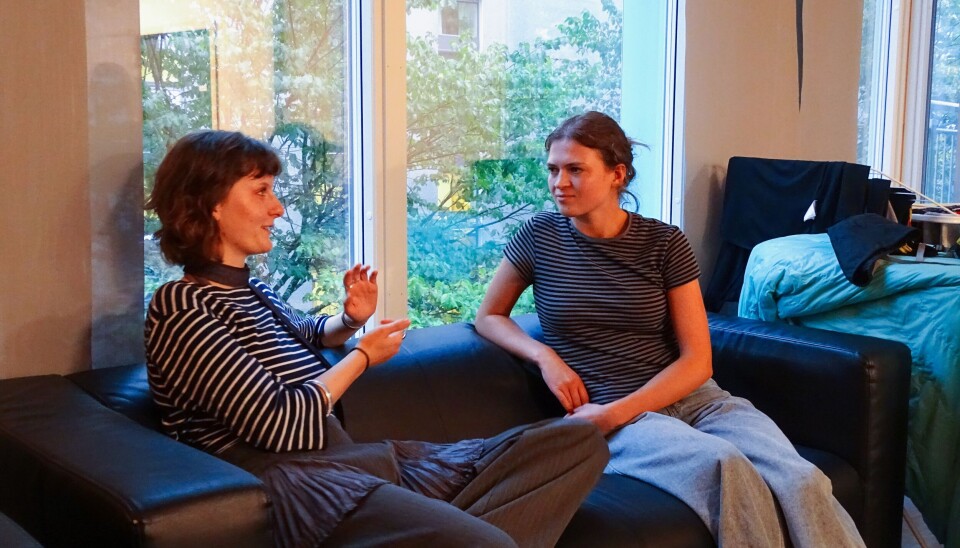«What’s Tofu?»: About being vegetarian among fish, meat and more fish
In Bergen’s fish- and meat-focused food culture, international students find that eating vegetarian comes with unexpected challenges.

The rain patters down on the tarpaulin of the fish market tents. Bergensers and especially tourists walk down the market aisle, glancing over at varieties of caviar, stockfish and whale meat pressed into a sausage form.
Tofu?
After a stroll over the market, the variety of food spots in the city doesn’t seem to end: pizza, pasta, tacos, even French tacos…? But as a vegetarian in Norway, you quickly realise: the options are limited.
– In Kiwi I asked the cashier where the tofu was, and he answered: «What’s tofu?», Jule Dienstuhl comments, a 22-year-old German exchange student.

She became vegetarian three years ago, and tries to eat as vegan as possible, though she sometimes eats cheese.
– Back home in Germany, it's easier. You can even buy vegan tuna. But here, I don’t really have many alternatives, she explains.
In Bergen grocery shopping is more of a challenge for her. Dienstuhl has had to give up her daily tofu, switching to cow´s milk because of the higher cost of vegan alternatives and a general lack of variety.
According to the German National Nutrition Survey, around en percent of the German population was vegetarian or vegan in 2022. Norway, however, is ahead: in 2022, the newspaper VG reported that 27 percent of Norwegians identified as vegetarian, pescatarian or vegan.
Meat meat meat
Tessa Carton, a 21-year-old student from the Netherlands, has been a vegetarian since she was 13 years old. What started as a way to avoid unappealing summer camp meals eventually became a conscious lifestyle choice.
– Later I read more articles about the industry, so it became more of a statement, she says.
For Dienstuhl, the environmental impact of meat and animal cruelty in the industry are her main motivation. Also, after moving out for the first time, eating vegetarian saves her a lot of money every month.
Still, both students were struck by Norway’s deep-rooted fish and meat culture.

– Norwegians eat so much fish. Way more fish than in Germany. The meat alternative is just one big brand. In Germany you have lots of cheap alternatives, Dienstuhl explains.
For international students, exploring the local food culture is an important part of the study abroad experience. But for vegetarians, traditional Norwegian dishes pose a challenge: fårikål (mutton and cabbage stew), sursild (pickled herring), tørrfisk (air-dried fish) and lapskaus (lamb stew).
Back at the fish market
Returning to the scene of the fish market, Dienstuhl admits:
– I broke my vegetarianism when I went to the fish market, because I was craving a fish bun.
Whale meat, on the other hand, is something she could never justify, she claims.
Carton, on the other hand, could not imagine breaking being vegetarian to try local specialities.
– I think I’m physically not able to eat meat. I think I would throw up. I kind of wish I wasn’t so extreme and would be able to try fish here. But I don´t think I can do it. I’m willing to try, but my body won’t let me.
When it comes to eating out, both students say Bergen is more welcoming. Almost every restaurant offers a vegetarian dish, and for a fully vegan option Dienstuhl recommends «Dirty Vegan Bergen».















